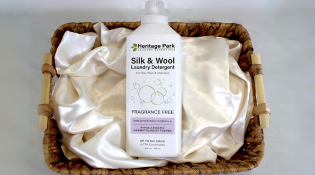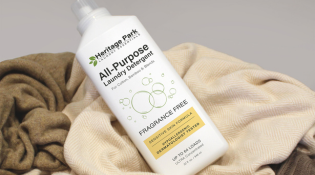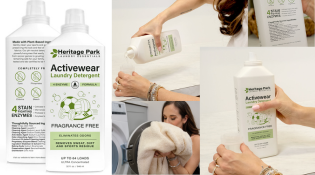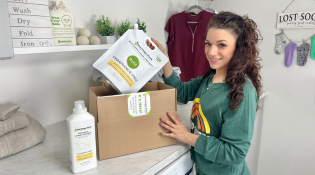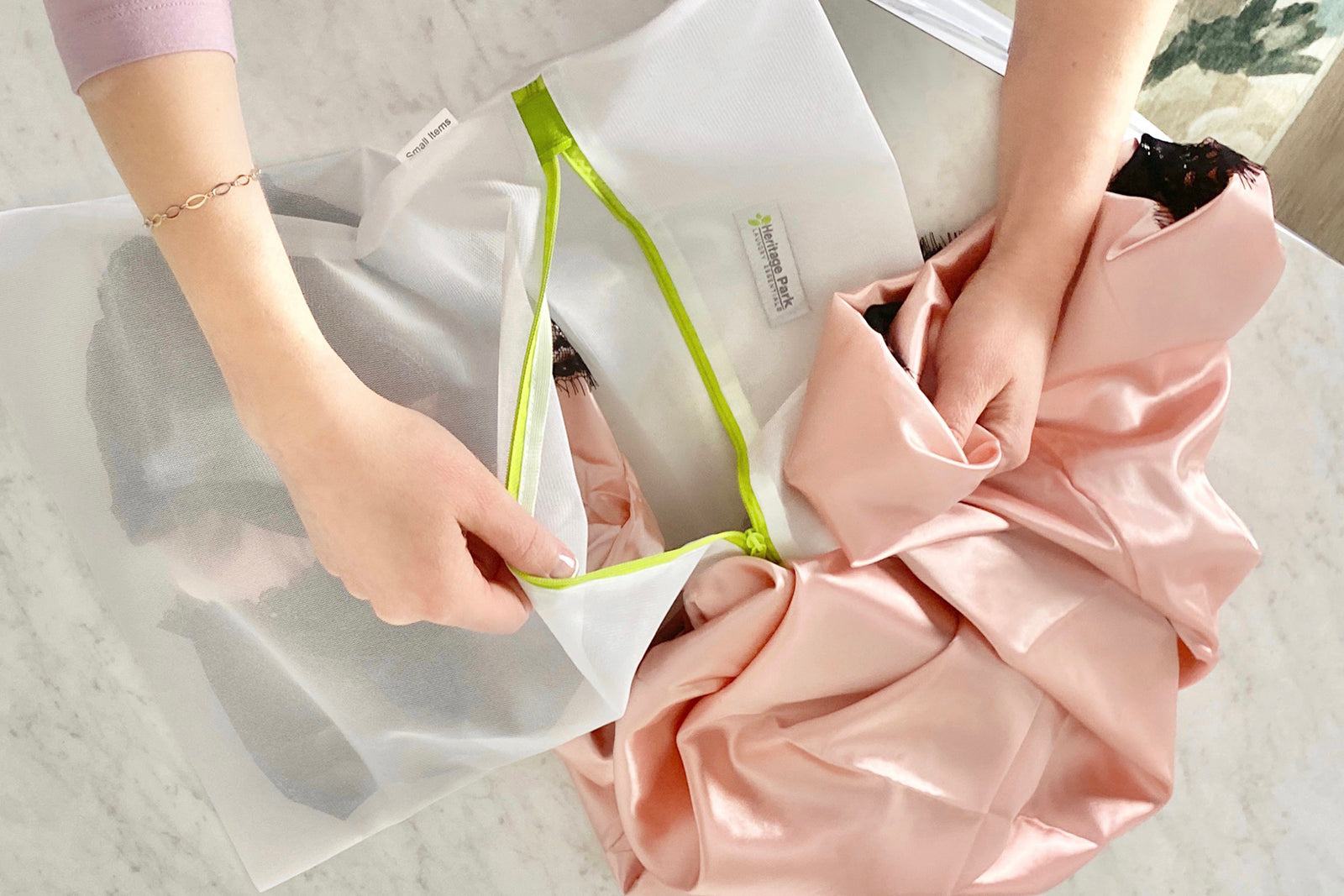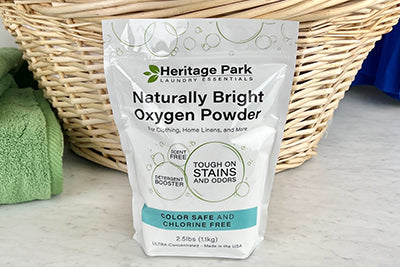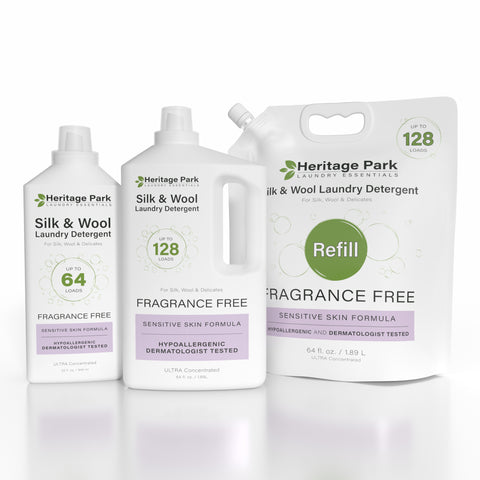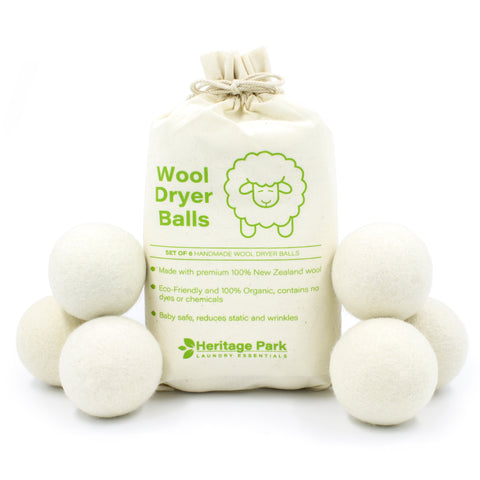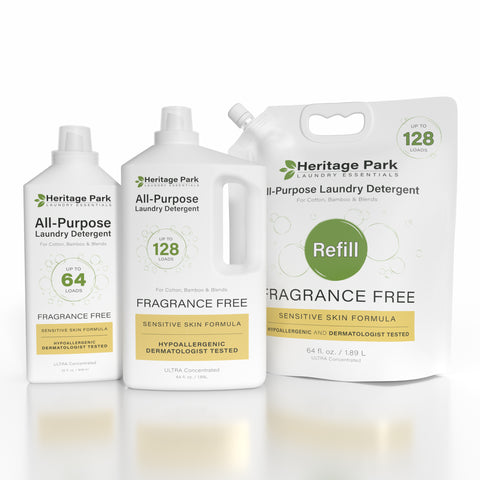The expert-approved method for washing your down bedding
Say goodbye to expensive trips to the dry cleaner, believe it or not, you can easily clean many down pillows and comforters using a washing machine. In this article, you'll discover effective tips and tricks to maintain and care for your luxurious down bedding, keeping it fresh and fluffy for longer. So, sit back, relax, and let's dive into the world of hassle-free down bedding cleaning!
Inside this Article:
- Down Pillows and Comforters: Machine Washable or Not?
- Whether and How Often to Wash Down Bedding?
- Can I Wash Down Pillows and Comforters at Home?
- Choose the Best Detergent for Down Pillows and Comforters
- What is the Best Wash Cycle for Down Pillows and Comforters
- How to Dry Down Pillows and Comforters
- Minimizing Dust Mite Allergies
- Heritage Park Laundry Essentials
Down Pillows and Comforters: Machine Washable or Not?
Here at Heritage Park Laundry Essentials, we love the look and feel of a fluffy layered bed. Feather pillow? We’ll take several. A lofty goose down comforter? Yes, please. In our opinion, surrounding yourself in the soft, luxurious feel of down bedding is one of life’s great pleasures and an everyday indulgence.
Down bedding is also an investment. And like all bed linen, giving your down accessories the proper care will keep them looking and feeling beautiful for the longest possible time. Many of these down bedding essentials can be machine washed. But you need to know what to do. That’s why the Heritage Park Clean Team is taking this opportunity to deliver our best practices and advice for washing your down pillowcases and bedding.
Whether and How Often to Wash Down Bedding?
We get it: washing down bedding is a little intimidating. Our first rule of thumb is to read the care label. If your down bedding says “Dry Clean Only,” we recommend following those directions and taking your items to a professional for dry cleaning. Many down manufacturers -- particularly luxury brands -- suggest professional laundering, or even sending your items back to the manufacturer to be cleaned. In some cases, not following the care instructions can void the manufacturer’s warranty on down. So consult the care label and proceed accordingly; you can find our helpful guide to laundry care labels here.
How often to wash your down pillows and comforters is another important question. In an ideal world, you would dry clean or launder these items a few times a year to clean them and minimize build-up of allergens like dust mites. As a practical matter, we recommend washing down pillows and down duvets at least twice a year; a good rule of thumb is to think about it when you turn your clocks forward or backward for Daylight Saving Time. The change of seasons is perfect for Fall and Spring cleaning, and is also a good time to switch out your bed sheets for lighter or heavier weight linen (and while you’re at it, remember to change your smoke detector batteries!).
There are a few things you can do, however, to keep your down pillows and duvet insert fresh between washings:
- Always use a pillow protector on your down pillow (between the pillow case and protector). This keeps the pillow clean and minimizes allergens like dust mites. Learn more about the many benefits of pillow protectors.
- Keep your down comforter inside a duvet- or comforter cover. (Some down comforters are made with heavier fabric and can be placed directly on the bed. However, any comforter or duvet insert will stay cleaner inside a cover).
- Air out your pillow and duvet in the sun. Sunlight is a wonderful disinfectant. Hang your duvet and pillows on a clothesline (best, because it allows air flow) or place them on clean tarps or sheets on dry grass. Leave them in the sun for several hours, fluffing them and turning occasionally (note: do NOT put a colored comforter in direct sunlight, which can cause it to fade). This will leave your down bedding smelling fresh and dries out the moisture that can lead to dust mite formation.

Can I Wash Down Pillows and Comforters at Home?
We would love to be able to tell you that down pillows and comforters can be washed at home. But the reality is, you’re probably going to want to make a trip to the laundromat to avail yourself of a high-capacity commercial machine. Why? Down and feathers are heavy when they get wet. Even if your home washing machine is a large HE front-loader that can accommodate a twin down comforter, it may just be too heavy once wet to spin effectively and may retain water and even detergent in the rinse cycle. A large, high fill power comforter definitely belongs in a commercial machine. You may, however, be able to wash a down pillow (one at a time!) in your front-loading machine at home. To be safe, we recommend not testing the capacity of your machine (read about washing machine and load sizes) and just planning for a little laundromat time.
Time-Saving Tip: While you’re going to the laundromat anyway, think about washing your mattress pad, which should also be cleaned in a commercial-size machine.
Choose the Best Detergent for Down Pillows and Comforters
You should wash your any type of bedding with a pH-neutral, gentle detergent that is made without harsh chemicals. For most cotton, linen, synthetic, and fabric blend bedding, Heritage Park All-Purpose Laundry Detergent -- made with a proprietary blend of laundry enzymes -- is the perfect choice. These enzymes are quite effective at breaking down protein-based stains (you can read more about laundry enzymes).
But your down- and feather-filled bedding requires something a bit different. Down and feathers are actually protein-based (like silk, wool, and cashmere) and should NOT be washed with enzyme detergent, which is made to break down proteins. Instead, use a mild, enzyme-free detergent that is formulated to clean protein-based fabrics like Heritage Park Silk and Wool Detergent. This concentrated formula is easy to use; low in suds for effective rinsing; and available in Fragrance Free/Hypoallergenic, Lavender Mist, and new Spring Magnolia scents. All Heritage Park laundry detergents are made in small batches with a short list of plant-based ingredients. They are also Leaping Bunny approved as cruelty free and never being tested on animals.
Follow the instructions on the bottle and measure the right amount of detergent for your size load. Care note: Remember that you can use a diluted solution of Heritage Park All-Purpose Laundry Detergent (with enzymes) as a stain remover to spot clean the fabric on your down pillow or duvet. Additionally, All-Purpose Laundry Detergent is fine to use for washing alternative fill pillows and duvets, which do not contain down or feathers.
What is the Best Wash Cycle for Down Pillows and Comforters
After any spot treating of stains, it’s time to wash. Down pillows and comforters should be washed on a gentle cycle (if available on a commercial machine) and in lukewarm water. Cold water or hot water is not good for down. Even though you are using a small amount of low-suds detergent and a delicate cycle you may still wish to run your down pillow or comforter through a second rinse cycle. Also, you may notice a unique smell to your down bedding when you remove the items from the dryer. This slight odor is simply the scent of wet down, and will go away once your bedding is dry. NEVER use fabric softener or bleach on down or feather bedding.
How to Dry Down Pillows and Comforters
Carefully drying your down comforter is an exercise in patience; it may take several hours and should be done in a dryer. Gently remove your down pillows and comforters from the washing machine and give them a little shake to ensure the down is evenly distributed. Chances are they will feel quite heavy. Place your down pillow or duvet in the dryer (you may still need a large-capacity dryer at the laundromat) and use a low heat setting. Drying down in high heat is NOT recommended, as it can damage the down and feathers as well as possibly scorch the fabric of the pillow or comforter. We recommend using a set of natural wool dryer balls to speed drying time and keep your items moving with weight distributed. You can also stop the dryer every half-hour or so during the drying process to manually fluff your bedding. The guiding principle here is dry on as low a temperature as possible for as little a time as possible, but get your down pillows and comforters completely dry. If the laundromat is closing or you’re due in the school car pick-up line, you can take a slightly damp comforter home and hang it to finish with air drying.
Minimizing Dust Mite Allergies
If you are allergic to down or feathers, you may want to opt for an alternative fill pillow and comforter. However, even those of us without identifiable environmental allergies or asthma can be bothered by dust mites. These are microscopic creatures that feed on dead skin cells and grow in warm, humid conditions (for example, inside a feather or down pillow). Humans are sensitive not to the live mites themselves, but rather to their excrement and dead bodies (we know, we know, this is pretty gruesome stuff to consider). Washing is a great way to minimize dust mite activity. You can also encase your pillow or duvet in allergen-proof covers. In between washes, you can also put your (dry!) pillow or duvet in a hot dryer for 15 minutes to kill dust mites.
Of course, if you have any questions regarding washing your down pillows, duvets, or other bedding, feel free to reach out to us by email or phone. We are here to help!
Heritage Park Laundry Essentials
At Heritage Park, caring for fine fabric is our passion. As lifelong collectors of luxury sheets, towels, and cloths, we found many commercially available "gentle detergents" either damaged our fabrics or didn't get the job done, leaving stains. We knew we could do better. So we developed a formula with the perfect balance of powerful -- yet safe -- ingredients designed to remove tough, set-in stains while remaining gentle on luxury linens. Please connect with us at (800) 977-1841 or visit our store or email us with any product feedback or cleaning questions.


